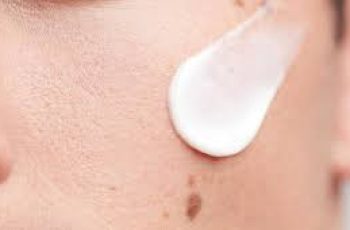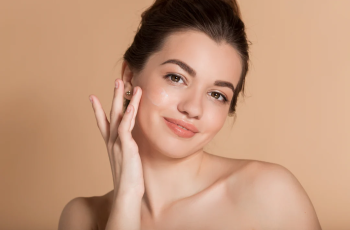
The Science of Rhodiola Rosea in Skin Care
In the ever-evolving world of skincare, where consumers are increasingly gravitating toward natural and plant-based ingredients, Rhodiola rosea has emerged as a standout botanical with powerful skin benefits.
Known by several names, including “golden root” and “arctic root,” Rhodiola rosea is a perennial herb that has been used in traditional medicine systems for centuries.
Long valued for its adaptogenic properties—helping the body adapt to stress—it is now making waves in the skincare industry for its ability to rejuvenate, protect, and revitalize the skin.
This comprehensive guide explores the origins of Rhodiola rosea, the science behind its active compounds, its role in modern skincare, and the types of individuals who can most benefit from its use. Whether you are a skincare novice or a seasoned enthusiast, understanding what makes Rhodiola rosea so special can help you make more informed decisions in your skincare journey.
What is Rhodiola Rosea?
Rhodiola rosea is a flowering plant that belongs to the Crassulaceae family.
It thrives in the harsh climates of high-altitude and Arctic regions, such as the mountains of Europe, Siberia, and parts of Asia.
The plant is easily recognizable by its thick, fleshy leaves and yellowish root, which is where most of its medicinal properties are concentrated.
Historically, Rhodiola was used in Russian, Scandinavian, and Chinese traditional medicine.
Warriors and athletes would consume the herb to increase stamina, improve endurance, and reduce recovery times.
More recent scientific exploration has uncovered that many of the adaptogenic properties attributed to Rhodiola are linked to its rich concentration of bioactive phytochemicals.
While originally consumed orally to reduce fatigue, anxiety, and symptoms of depression, Rhodiola rosea is now being incorporated into topical skin care formulations.
Unlike some herbs whose benefits are purely internal, Rhodiola offers tangible advantages for skin health—especially when combating signs of aging, inflammation, and environmental stress.
The Active Compounds Behind Rhodiola Rosea’s Skin Benefits
The key to Rhodiola’s efficacy in skincare lies in its phytochemical composition. Researchers have identified a number of bioactive compounds that contribute to its therapeutic effects on the skin. These include:
1. Rosavin
Rosavin is one of the most studied active ingredients in Rhodiola. As a member of the phenylpropanoid class, it has potent antioxidant properties.
This means it neutralizes free radicals—unstable molecules that damage skin cells and accelerate aging.
Rosavin also stimulates fibroblasts, which are the skin cells responsible for synthesizing collagen, the protein that keeps skin firm and elastic.
2. Salidroside
Salidroside is another powerful antioxidant and anti-inflammatory agent. Classified as a glycoside, salidroside enhances cellular repair mechanisms by promoting healthy skin cell turnover.
It also contributes to the reduction of inflammation, helping to calm irritated or sensitive skin.
Moreover, glycosides are excellent carriers that enhance the delivery of active ingredients to deeper layers of the skin.
3. Tyrosol
Tyrosol is a phenolic compound with both antioxidant and anti-inflammatory capabilities.
It has been shown to help protect the skin from oxidative stress, soothe inflamed skin, and regulate melanin production—making it beneficial for individuals dealing with hyperpigmentation or uneven skin tone.
4. Flavonoids
Rhodiola also contains a suite of flavonoids, plant metabolites known for their antioxidant potential.
Flavonoids offer a dual role: they protect against UV radiation and pollution, and they support collagen matrix stability. This makes them highly valuable in anti-aging skincare formulations.
Benefits of Rhodiola Rosea in Skin Care
When incorporated into skin care products, Rhodiola rosea offers a wide array of benefits. Here’s a deeper look at what this remarkable herb can do for your skin:
1. Stimulates Collagen Production
As the skin ages, collagen levels decline naturally. Environmental stressors like sun exposure and pollution further exacerbate this process, leading to wrinkles, sagging, and dullness.
Rhodiola’s ability to stimulate fibroblast activity helps ramp up collagen production, improving skin texture, elasticity, and resilience.
2. Antioxidant Protection Against Free Radicals
The skin is constantly bombarded by free radicals generated by UV rays, blue light, cigarette smoke, and environmental pollutants.
The antioxidants in Rhodiola help form a defensive barrier that reduces oxidative stress and protects the skin from premature aging.
3. Brightens Uneven Skin Tone
Hyperpigmentation and dark spots are common skin concerns, especially in aging skin or after acne.
Tyrosol in Rhodiola helps to regulate melanin synthesis, promoting a more even and radiant complexion. This can be particularly useful in treating sunspots and post-inflammatory hyperpigmentation.
4. Reduces Redness and Inflammation
Chronic inflammation is a silent contributor to many skin issues, from rosacea to eczema to premature aging.
Rhodiola’s anti-inflammatory compounds, particularly salidroside, help calm irritated skin, reduce redness, and support the skin’s natural healing processes.
5. Enhances Skin Barrier Function
By supporting healthy cell turnover and reducing inflammation, Rhodiola can strengthen the skin’s protective barrier.
This helps to prevent moisture loss and makes the skin more resistant to external aggressors like allergens and bacteria.
6. Boosts Radiance and Glow
Healthy skin isn’t just about avoiding blemishes or wrinkles—it’s also about radiance.
Rhodiola improves microcirculation in the skin, delivering oxygen and nutrients more effectively, resulting in a natural, healthy glow.
Who Should Use Rhodiola Rosea?
Rhodiola rosea is suitable for most skin types, but it’s particularly beneficial for individuals experiencing:
Signs of Aging: Wrinkles, sagging, and fine lines can be mitigated with Rhodiola’s collagen-boosting properties.
Sensitive or Irritated Skin: Those with rosacea, redness, or reactive skin can benefit from its anti-inflammatory action.
Hyperpigmentation: Uneven skin tone or dark spots can be improved thanks to its melanin-regulating abilities.
Urban Skin Stress: People exposed to pollution or daily UV radiation can use Rhodiola for its protective antioxidant shield.
However, as with any new skincare ingredient, a patch test is recommended, especially for those with very sensitive skin or known allergies to botanical extracts.
Topical Use vs. Oral Supplementation
While Rhodiola is available as an oral supplement, it is generally not recommended for skin benefits due to potential side effects.
When ingested, it can cause dizziness, dry mouth, or excessive salivation in some individuals. On the other hand, topical use is much safer and better suited for targeting skin issues directly.
Topical formulations allow the skin to absorb only what it needs, with minimal risk of systemic side effects.
Many serums, moisturizers, and eye creams now include Rhodiola as an ingredient, often paired with other antioxidants like vitamin C or niacinamide for synergistic effects.
Products Featuring Rhodiola Rosea
Several skincare brands have recognized the power of Rhodiola rosea and have begun incorporating it into their formulations. For example:
SkinMedica’s Instant Bright Eye Mask: This eye mask includes Rhodiola rosea to combat puffiness, dark circles, and signs of fatigue around the eyes.
Herbivore Botanicals Pink Cloud Cream: This product includes Rhodiola as a skin-soothing and anti-stress ingredient that also promotes a dewy glow.
Dr. Jart+ Cicapair Line: Known for calming irritated skin, some products in this line include Rhodiola alongside Centella Asiatica.
When shopping for products with Rhodiola, look for it listed among the top 10 ingredients on the product label for best results.
Final Thoughts: Is Rhodiola Rosea Right for You?
Rhodiola rosea is a botanical powerhouse that offers compelling benefits for the skin.
Its ability to protect against environmental stress, calm inflammation, stimulate collagen production, and improve skin tone makes it a valuable addition to modern skincare routines.
Whether you’re battling the signs of aging, recovering from acne, or simply seeking to protect your skin from the stresses of daily life, Rhodiola rosea provides a multi-functional solution that’s both natural and effective.
If you’re curious about how Rhodiola rosea might fit into your personalized skincare routine, consult a dermatologist or skincare specialist—or take an online skin type quiz to better understand your skin’s needs.
With the right product and application, Rhodiola could become a cornerstone in your journey toward healthier, more radiant skin.


